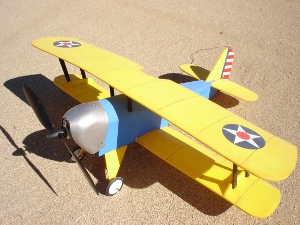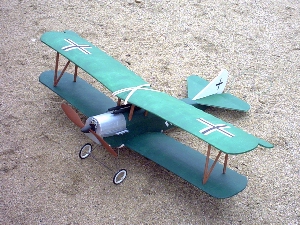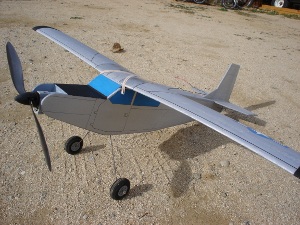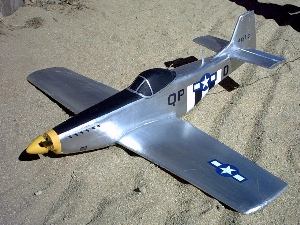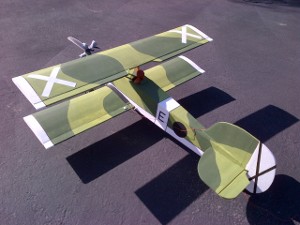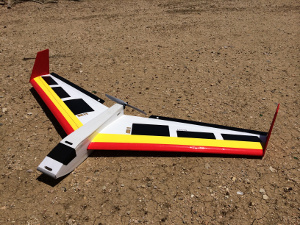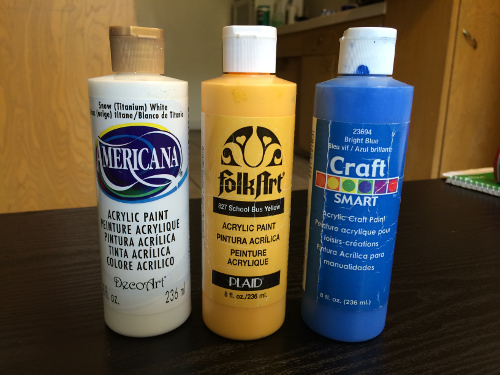
Types of Paint
Bare foam and foamboard are best painted with water-based acrylic paint. Solvent-based paints will dissolve many types of foam.
Acrylic paint is available at Michaels, Wal-Mart, and probably many other stores.
I�ve found the best brand to be Americana by DecoArt. Many colors are available, the texture is good, and the pigment loading is high. FolkArt by Plaid Enterprises is OK too. However, the less expensive Craft Smart by Plaid Enterprises has a low pigment loading and seems to be of lower quality.

Types of Foam
I�ve successfully painted EPS (extruded polystyrene) foam and Adams foamboard, both with paper and with paper removed. Adams foamboard is also known as �Dollar Tree� or �DT� foamboard because it can be found at � you guessed it � Dollar Tree stores.
I have not tried painting blue or pink foam, EPP (expanded polypropylene), or Model Airplane Foam. I�ve had some success painting Dow Blucor, but I don�t build with this foam any more.
Application Techniques
EPS foam has pores in it (as pretty much all foam does), but the pores in EPS can be larger than the pores in other foams. One of the tricks to painting foam planes is to use thin coats to minimize weight, but put enough paint on to cover. This is where a paint (Americana) with a high-pigment loading excels.
If you simply brush paint on to EPS foam, you�ll be left with visible pores that remain unpainted white. What you shouldn�t do is throw so much paint on the plane that the pores fill with paint. So when painting, brush on for large areas, and make more of a rubbing motion for the pores. The idea here is to not fill the larger pores with paint, but rather to paint the inside surfaces of the pore. Painting each individual pore will drive you crazy. The rubbing motion works well and will color most of the pores.
Regarding brushes, I typically just use a medium-size brush, even for large areas, and sometimes use a 1� wide foam brush (you�ll need the small brush for dabbing pores, the foam brush is less effective for this). Details are painted with an even smaller stiffer brush.
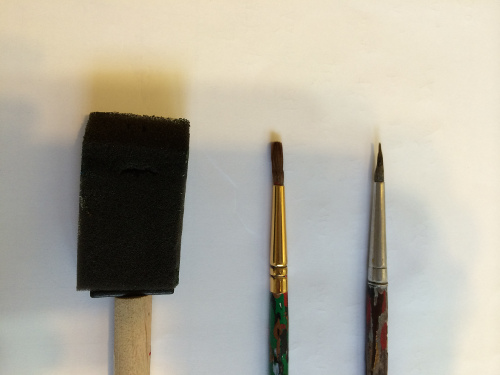
Lightweight Spackling
For an even better painting surface, use lightweight spackling such as DAP Patch-N-Paint. Don�t use the vinyl spackling as this is too heavy. Use the spackling as it is for large imperfections in the foam, but after that, mix with water to create a paint-like consistency and paint the spackling on to the foam. When dry, sand, and this will result in a smoother, more paintable surface.
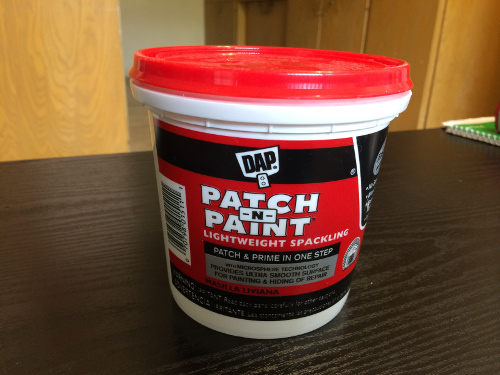
What to Watch Out For
When painting foamboard, watch out for warping and delamination (if you leave the paper on the foamboard).
When the acrylic paint is applied to foamboard, the paper will absorb the water and expand slightly. Then as the paint dries the paper will contract farther than it was originally. This effect is quite powerful and can warp a wing built from foamboard. However, the warp is even if you paint one side of the wing at one time, and can actually be used to create some dihedral. I have not tried painting both sides of a wing at the same time so that the warp is negated and disappears, because I usually leave the undersides of my wings unpainted white, except for insignia or stripes. The warp has had no effect on aileron hinge lines because the aileron warps also, and I use tape for hinges.
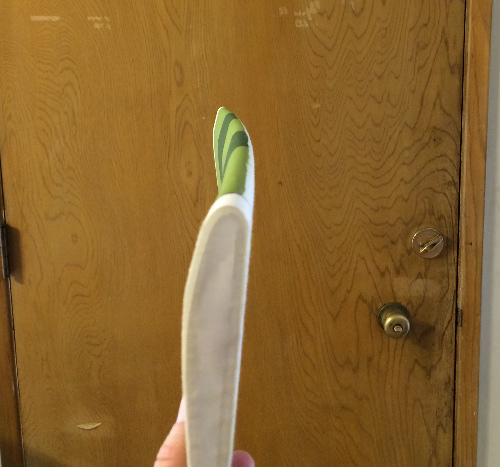
With foamboard it�s especially important to minimize the amount of paint used, not only to prevent weight, but also to prevent delamination of the paper to the foam. If the paper is too wet the paper is more likely to delaminate from the foam, even when the paint is dry. Delamination decreases the strength of the foam. To prevent the likelihood of delamination, use paint sparingly, and apply a little more at foamboard edges to seal the edge of the paper to the foam with paint.
Of course if you use foamboard with the paper peeled away you will not see any delamination issues, and the pores in foamboard are much smaller compared to EPS foam, so you probably wouldn�t want to use the spackling either.
Paint Alternatives
If you don�t want to use paint, there are some alternatives to applying color.
Colored packing tape can be used, as this not only provides color, but also adds strength to the plane. Tape also has the advantage of sealing the plane against moisture if you fly in wetter climates. The colored tape I�ve used is semi-translucent, so be careful with tape overlap, as the overlaps will be a darker color than just one layer of tape. However, you could allow the overlaps to become stripes. Applying tape with no overlap is tricky and too time consuming, and reduces some of the strength that the tape imparts to the plane.
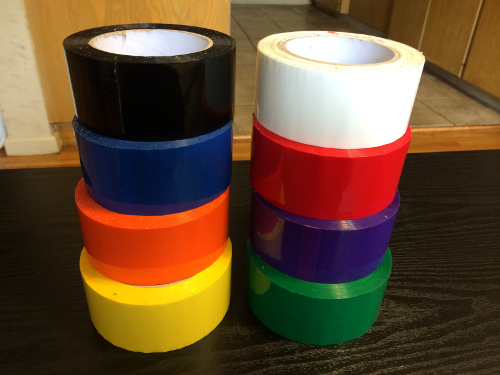 |
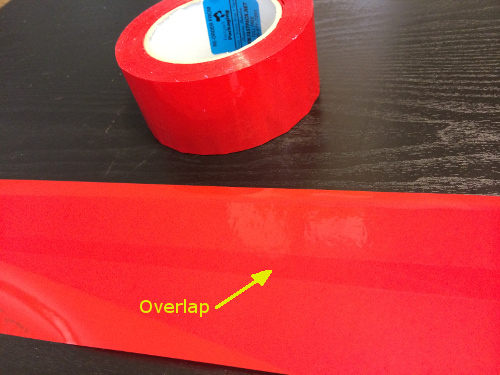 |
I bought the colored tape from Amazon, it's a generous amount of tape and should last a long time. I haven't found much use for the white tape, but it did help cover the carbon spar on the bottom of a flying wing.
The black tape, and indeed any of the colors could be carefully cut into thin pinstripes.
A hybrid method of tape and paint could be used. In this case, use clear packing tape since it�s less expensive and more readily available than colored. However, acrylic paint doesn�t adhere well to tape (sanding the tape prior to painting helps a little). In this case use solvent-based spraypaint on the tape. Make sure spraypaint doesn�t get on to bare foam as it will likely dissolve the foam. You could apply very thin coats of spraypaint on to bare foam, but you�ll probably end up with a cratered foam surface.
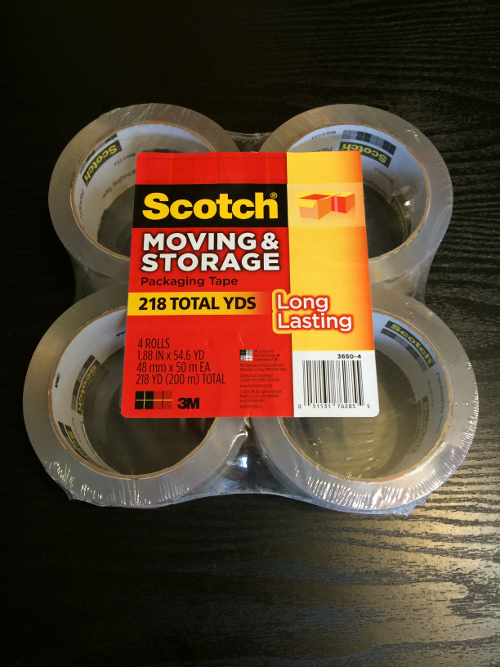
Examples
